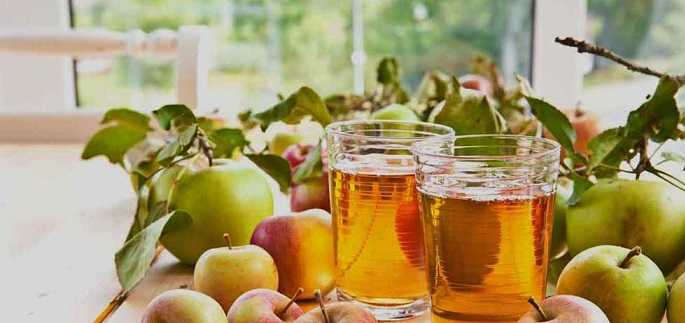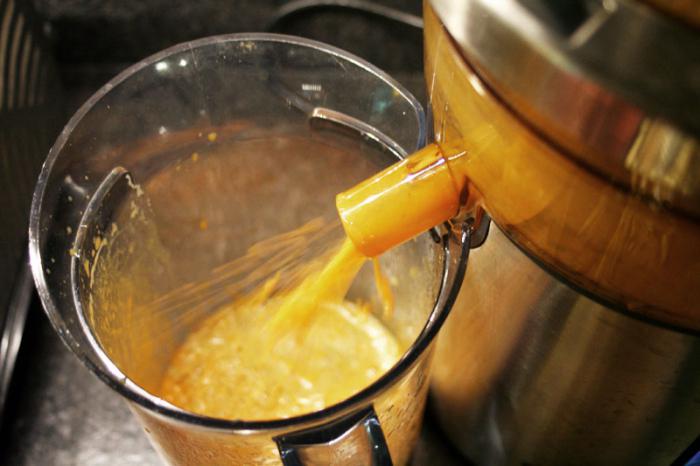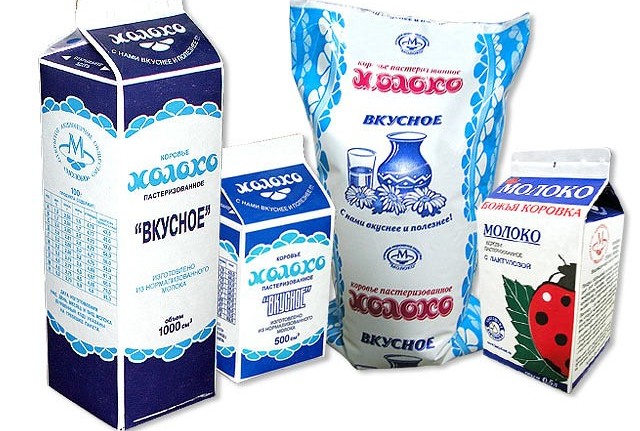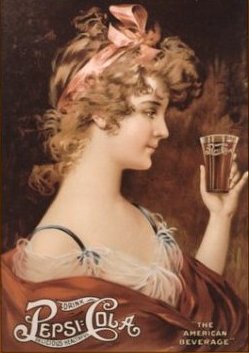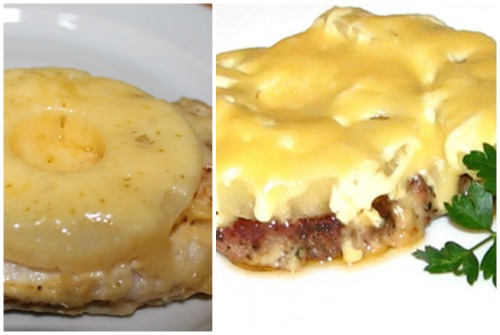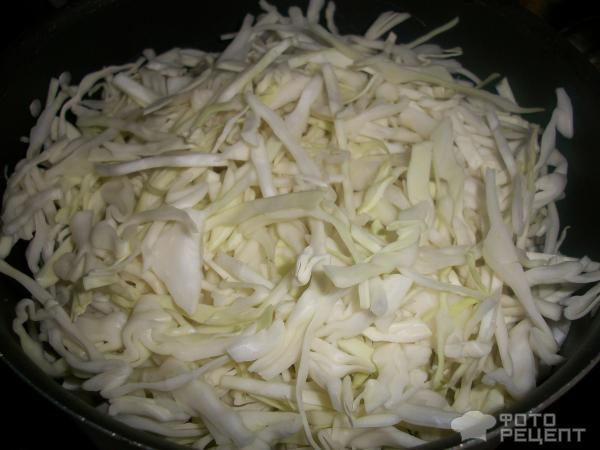Coca-Cola is a product of the Belle Époque. The history of Coca-Cola, its recipe and interesting facts
The Coca-Cola drink was invented in Atlanta (Georgia, USA) on May 8, 1886. He was invented by pharmacist John St Pemberton, a former officer.
American Army Confederation. The name for the new drink was invented by Pemberton's accountant Frank Robinson, who, also in calligraphy, wrote the words “Coca-Cola” in beautiful curly letters, which are still the logo of the drink.
The main ingredients of Coca-Cola were as follows: three parts of coca leaves (cocaine drug was obtained from the same leaves) per one part of tropical Cola tree nuts. The resulting drink was patented as a remedy “for any nervous disorders” and began to be sold through an automatic machine at Jacob’s largest city pharmacy in Atlanta. Pemberton also claimed that Coca-Cola heals impotence, and that it can be passed on to those who are addicted to morphine (Morphine, incidentally, was not indifferent to Pemberton himself). It should be noted here that cocaine was not a prohibited substance at that time and did not know anything about its health hazard (for example, in the novel “Sign of the Four” by Arthur Conan Doyle, Sherlock Holmes makes himself injections of cocaine in minutes of inactivity, so painfully tolerated by him). Therefore, cocaine sold freely, and it was often added for pleasure and tone in drinks instead of alcohol - Coca-Cola was not an innovation in this.

At first, only 9 people bought the drink on average daily. Sales revenue for the first year was only $ 50. It is interesting that $ 70 was spent on Coca-Cola production, that is, in the first year the drink was unprofitable. But gradually the popularity of Coca-Cola increased, and profits from its sale, too. In 1888, Pemberton sold the rights to produce a drink. And in 1892, businessman Asa Griggs Candler, who had the rights to Coca-Cola, founded the company The Coca-Cola Company, which is engaged in the production of Coca-Cola to this day.
In 1902, with a turnover of $ 120 thousand, Coca-Cola became the most famous drink in the United States. [The same year was marked by the appearance of the main competitor of The Pepsi-Cola Company - La belle epoque].
But in the late 1890s, public opinion turned against cocaine, and in 1903 a devastating article appeared in the New York Tribune, claiming that Coca-Cola was to blame for the negroes who drank it from urban slums and began to attack white people. After that, it was not fresh coca leaves that were added to Coca-Cola, but already squeezed ones, from which all cocaine was removed.
Since then, the popularity of the drink has grown exponentially. And fifty years after the invention, Coca-Cola became for Americans something of a national icon. Since 1894, Coca-Cola was sold in bottles, and since 1955 in banks.
Stages of a Long Way:
1886 - the invention of the drink
1888 - sale of the case to Irish expat Ace Candler, who begins an aggressive advertising campaign
1893 - trademark registration
1894 - bottling
1920 - the first factory in Europe
1922 - creation of a package of 6 bottles
1928 - Coca-Cola at the Olympics in Amsterdam
1960 - the appearance of cans
1977 - the appearance of two-liter plastic bottles
Pemberton, John Stith (English John Stith Pemberton) (July 8, 1831 - August 16, 1888) - American pharmacist, inventor of Coca-Cola:

They say that there is a recipe written by the hand of Pemberton himself. It is stored in a special safe, access to which only top managers have access to. 
companies, and even they can open the safe only together. On the one hand, with the current close attention and strict requirements of various organizations for food and drink, it is strange that the recipe has not yet been disclosed.
Here is one of the options for decoding the composition (based on the materials of the journal "Power"):
First, a black elixir is made:
- 80 drops of orange essential oil
- 40 drops of cinnamon essential oil
- 120 drops of lemon essential oil
- 20 drops of coriander essential oil
- 40 drops of nutmeg oil
- 40 drops of neroli oil
- Lime essential oil - to taste
Then, 10 grams of water is taken 42 grams of black elixir, 113 grams of caffeine citrate, 56 grams of phosphoric acid, 28 grams of vanilla extract. Now it remains to add sugar - as much as 13.5 kilograms.
Impressive, of course, is the amount of sugar, for one glass of drink it accounts for as many as 9 tablespoons. Just because of this, perhaps, it should have been hidden, because one can only imagine how useful this organism is to “miraculous means”.
We can say with confidence that neither Coca nor Cola has been there for a long time.
Interesting Facts
If all the Coca-Cola that was developed in more than a hundred years is bottled, laid out in one line and entwined with the near-earth orbit of our planet, it will wrap the Earth 4334 times. By the way, a similar chain to the Moon would reach back and forth 1045 times.
If all the produced Coca-Cola were distributed in bottles to all the inhabitants of the planet, each of us would receive 767 bottles.
 If the pool worked out by Coca-Cola is 180 centimeters deep, its length would be 33 kilometers and its width would reach almost 15 kilometers. 512 million people can enter this pool at the same time.
If the pool worked out by Coca-Cola is 180 centimeters deep, its length would be 33 kilometers and its width would reach almost 15 kilometers. 512 million people can enter this pool at the same time.
Every second, 8000 glasses of drinks produced by the Company are drunk in the world.
The huge Coca-Cola sign placed above the Coca-Cola World pavilion in Atlanta consists of 1407 ordinary bulbs and 1906 "neon" linear lamps. Sign height - 9 meters, width - 8, weight - 12.5 tons.
The largest Coca-Cola sign is located in the Chilean city of Arica. It is set on top of a hill. The sign is 122 meters wide and 40 meters high. This sign is composed of 70 thousand bottles from Coca-Cola.
In 1989, Coca-Cola was the first foreign company to advertise its brand on Pushkinskaya Square in Moscow.
Two countries in which the highest percentage of Coca-Cola consumption per capita in the world have absolutely nothing in common. This is a huge continental subtropical Mexico and a tiny island subpolar Iceland.
The longest Coca-Cola delivery route is in Australia. Truck drivers have to cross the 1803-kilometer highway to deliver products from the city of Perth (South Australia) to the settlements of Karratha and Port Hedland.
Related books
(to see the description of the book, click on the picture)


Raising the topic of the most common drinks today, we should recall the history of the appearance of Coca-Cola. Today, many interesting facts are known regarding this drink consumed by many.
- The history of Coca-Cola on the Russian market begins with an advertisement placed by the company on Pushkinskaya Square in Moscow. This was the first foreign advertising campaign among Russian residents held in 1989.
- Coca-Cola is an excellent rust remover. This is due to the high content of phosphoric acid in the drink. Coca-Cola also removes plaque in the sink, bath and toilet, scale in the kettle. Blood stains wash it off, so police in America always have a few gallons of Coca-Cola on hand to use during an accident - to wash the asphalt.
- So many Coca-Cola were produced that if you pour this volume into bottles and distribute it at a time, then every inhabitant of the land will receive 767 bottles! A pool filled with the total amount of Coca-Cola produced will be 33kmX15 km in size, provided that the reservoir reaches a depth of 180 centimeters! At the same time, 512 million people could swim in such a virtual pool.
- For the first time in 1904, the company issued a Coca-Cola billboard, posting it in the city of Cartsville, Georgia. It hangs to this day in the same place.
- Experts believe that the cost of the Coca-Cola brand - one of the most successful in the world - is now equal to seventy billion dollars in Coca-Cola.
If you look at the very beginning of the history of the Coca-Cola company, you can be struck by this fact: in the first year of the carbonated drink, now known to almost everyone, its production was unprofitable for its producers and creators. Revenues for the entire first year amounted to about $ 50, but after all, 70 were invested!
Birth of syrup - the progenitor of the Coca-Cola drink
 The very birth of Coca-Cola, its history. The recipe for this drink was compiled in 1886 by an amateur chemist John Stith Pemberton, who owned a pharmaceutical company. Once John cooked syrup and treated them to his friend - accountant Frank Robinson. No one then could have thought that this household episode would serve as the beginning of the creation of the most advanced Coca-Cola company.
The very birth of Coca-Cola, its history. The recipe for this drink was compiled in 1886 by an amateur chemist John Stith Pemberton, who owned a pharmaceutical company. Once John cooked syrup and treated them to his friend - accountant Frank Robinson. No one then could have thought that this household episode would serve as the beginning of the creation of the most advanced Coca-Cola company.
Writing down Frank's advice on the syrup, John took it to Jacobs ’Pharmacy, the largest pharmacy. The first servings of syrup were sold at a price of 5 cents per 200 grams. It consisted of 3 parts of coca leaves and one part of nuts of a tropical cola tree. The patent for this invention claimed to be “a cure for any disorders of the nervous system.” John Stith himself claimed that syrup helps to unlearn the addiction to morphine and can heal impotence.
The emergence of a famous brand
An interesting name, consisting of the names of syrup ingredients recorded through a hyphen, was invented by the same accountant Frank Robinson, who was the first taster of “medicine for nerves”. He himself wrote the words “Coca-Cola” in his calligraphic handwriting - this is how the history of the famous Coca-Cola brand began, which is still the logo of the drink.
Later, the logo of the now famous brand was patented by the US Bureau. Bright red curly letters on a white background were the main details of the brand. Later, the logo was modified: a huge red-brown drop appeared behind white letters.
But the employees of Coca-Cola company strictly followed and are now making sure that no one from the outside “encroaches” even on elements of the corporate identity of the brand. Litigation arose on the most seemingly insignificant little things: the use of a similar font, red to draw another logo, the color of the drink, the smell.
Needless to say, the Coca-Cola company had no losses? She destroyed the competitors easily and with pleasure, the prestige of the Coca-Cola brand steadily increased.
Appearance of carbonated drink from syrup “from nerves”
 But the current fame appeared at Coca-Cola much later. And at the very beginning, in 1886, the syrup was modestly sold in pharmacies, not enjoying special success. And who would have thought that the story of the creation of the current carbonated drink would begin with the light hand of pharmacy pharmacist Willie Venable, too lazy to go for tap water. Instead of ordinary water, the lazy seller suggested that a visitor suffering from a hangover add soda to the syrup. The resulting "pop" led the man in complete delight!
But the current fame appeared at Coca-Cola much later. And at the very beginning, in 1886, the syrup was modestly sold in pharmacies, not enjoying special success. And who would have thought that the story of the creation of the current carbonated drink would begin with the light hand of pharmacy pharmacist Willie Venable, too lazy to go for tap water. Instead of ordinary water, the lazy seller suggested that a visitor suffering from a hangover add soda to the syrup. The resulting "pop" led the man in complete delight!
Since then, Coca-Cola was sold only in combination with soda. However, it was impossible to call this enterprise profitable at that time: for a year, the sale of Coca-Cola brought a loss of $ 20,000 to businessmen ...
The creator of the drink passes the rights to it
In the same 1886, a dry law was introduced in Atlanta, which is a definite positive moment for Coca-Cola. However, by that time Pemberton’s health was deteriorating, and his financial situation was badly shaken. And he decides to sell the coveted recipe and equipment. Moreover, the very lazy seller who made the discovery of “pops” based on Coca-Cola syrup receives two-thirds of the company producing the drink.
For his invention, Pemberton received only 2 thousand dollars and died a pauper in 1888 in mid-August. His grave is in a cemetery for the poor. And only in 1958, a stone tombstone appeared on the grave of the founder of Coca-Cola.
First steps to success
Coca-cola’s history begins with the advent of the poorest Irish emigrant Aza Kender in Atlanta. Having managed to turn his dollar in a compartment with 75 cents into a small capital in a short time, he buys out a recipe for making “coca-cola” from the widow of John Stith for 2.3 thousand dollars.
Further, the story tells that in 1893 it was Aza Kendler who registered the “The Coca-Cola Company” in Georgia. The initial authorized capital of the company was one hundred thousand dollars. He also registered the Coca-Cola trademark, which has been used since 1886. In the same 1893, shareholders of The Coca-Cola Company received their first, albeit small, dividends.
First steps in advertising
 With the advent of the new director, the history of the development of the company producing and selling Coca-Cola begins its new round of ascent. Together with Frank Robinson, Aza Kendler is developing a new drink formulation in which cocaine is ruthlessly removed from the ingredients, but the taste improves and the shelf life is extended. Moreover, the invigorating effect on the body of the drink is preserved, which is a huge plus for Coca-Cola.
With the advent of the new director, the history of the development of the company producing and selling Coca-Cola begins its new round of ascent. Together with Frank Robinson, Aza Kendler is developing a new drink formulation in which cocaine is ruthlessly removed from the ingredients, but the taste improves and the shelf life is extended. Moreover, the invigorating effect on the body of the drink is preserved, which is a huge plus for Coca-Cola.
Aza Kendler is an excellent marketer. He surprisingly accurately calculates his advertising moves:
- free distribution of Coca-Cola in pharmacies in exchange for the addresses and names of regular customers;
- mailing to the received addresses of coupons for the free purchase of one glass of drink;
- trade in calendars, watches and souvenirs with the Coca-Cola logo.
Today, all these tricks are known to every advertising agency. But in those years, for Coca-Cola, this was a turning point in the history of the company producing and selling a non-alcoholic invigorating drink.
Everything is important in business, even the shape of the beverage container
1916, another important event occurred in the development history of Coca-Cola - the appearance of a unique bottle with a waist. Now the brand has become recognizable not only thanks to the original logo, but also by its creative capacity. After all, the shape of the bottle was so reminiscent of a super-fashionable female skirt-year at that time with a narrow waist and an expanding smoothly bottom.
The image of Coca-Cola grows even higher after such an advertising trick, when the bottle is “handed” to everyone beloved Santa Claus. The development history of Coca-Cola is enriched by another interesting fact and takes a step up the ladder in the rating of sales of consumer products.
A Brief History of Coca-Cola in Dates
 1931 - Santa Claus, by order of Coca-Cola, gets his present appearance that was presented to him by the American artist Haddon Sundblom: the artist’s face and red robe with a white rim.
1931 - Santa Claus, by order of Coca-Cola, gets his present appearance that was presented to him by the American artist Haddon Sundblom: the artist’s face and red robe with a white rim.
1939 - the beginning of the Cold War with PepsiCo in connection with the use of the last word “cola” in its name, which Coca-Cola considered to be part of its brand. Despite the peace agreement, the companies continue a quiet but irreconcilable battle for primacy.
1958 - The debut of Fanta, the brainchild of Coca-Cola.
1961 - the birth of another drink, known today to everyone under the name "Sprite".
1960 - Coca-Cola drinks appeared in cans.
1977 - the appearance of drinks in plastic bottles with a capacity of 2 liters.
Perhaps now you can’t find a person who has never tried this legendary drink. Coca-Cola is one of the most recognizable and expensive brands in the world. She is superior to Microsoft, Google and Nokia. Its assets amount to about $ 100 billion. The drink is actively consumed in more than 200 countries. Coca-Cola has changed the worldview of people around the world, imposed its own ideas and ideas on people around the world. But it was not always so. The world learned about it only in 1889. Although, the history of the Coca-Cola brand began on May 8, 1886. Pharmacist J. Pamberton shows investors the medicine he created and receives the necessary investments. These investments help an unknown entrepreneur to organize a small production for the production of antidepressant, which, in addition, was very good at fatigue, and it cost only 5 cents. And this miraculous drug was called no other than Coca-Cola.
History of Coca-Cola
Yes, yes, for the first time, Coca-Cola appeared on the shelves of pharmacies, not stores. Yes, and the name of the medicine was more than justified, because the main active ingredients in the drink were coca leaves (the very thing cocaine is made of) and Cola nuts (they contain caffeine and theobromine in large quantities). So, the taste of that first Cola was significantly different from what we know now. But, whatever it was, Coca-Cola began to be sold in pharmacies, and was absolutely not in demand among the population. No one wanted to buy it. It seemed that the collapse of an unborn brand was inevitable. But, here, one of the sellers decides to experiment, and adds soda water (soda) to the drink. And it is in this embodiment, the product begins to enjoy wildly popular with customers.
In 1889, a resourceful, purposeful and unknown Irish emigrant named Aza Griggs Candler, decided to take a chance and for $ 2,300 buys the rights to produce Coca-Cola from Pemberton. And from that moment on, the Coca-Cola brand begins to turn into a transatlantic giant, which will soon conquer the whole world.
The first thing Candler does is register a Coca-Cola trademark and create The Coca-Cola Company. In fact, it lays the foundation for a strategy for the future development of the brand, namely, the emphasis on advertising. The grand success of the brand is only due to competent and unprecedented advertising. Neither in quality nor in taste Coca-Cola could and cannot compete in the market. Everything that Coca-Cola has now, it has only thanks to advertising.

Coca-Cola Development History
But, nevertheless, we will return to the distant XIX century. Since Kandler’s acquisition of Coca-Cola production rights, it’s been 3 years, and the brand is already becoming the most famous drink in the United States. And after another 7 years, a small production bought for $ 2,300 Candler sells to a group of investors for $ 25 million!
In this regard, it is very interesting to consider what steps in the development of Coca-Cola Kandler used, as in several years, he was able to achieve such successes.
Coca-Cola logo story
First, he used a sustainable brand in the form of a logo, 
 which, by the way, has never changed since its inception. The history of the Coca-Cola logo began back in the days of Pamberton, it was then that Frank Robinson, an accountant of Pemberton, painted white calligraphic letters on a red background, and the very name Coca-Cola was invented by Robinson as well.
which, by the way, has never changed since its inception. The history of the Coca-Cola logo began back in the days of Pamberton, it was then that Frank Robinson, an accountant of Pemberton, painted white calligraphic letters on a red background, and the very name Coca-Cola was invented by Robinson as well.
Under the leadership of Kandler, the logo was promoted as and wherever they could: placed on souvenirs, printed on leaflets. As a result, the logo firmly entered the heads of ordinary people. It got to the point that other, less well-known brands of soda began to copy the logo. In 1916 alone, Coca-Cola launched more than 150 lawsuits against plagiarizing its logo.
Slogans Coca-Cola
Another innovation by Candler was playing on the feelings of the Americans. Cadler used short and concise slogans, for example, "The Great Soft Drink of the Nation." We must remember that in those days the prohibition was introduced, so this slogan shot in the mass as well as possible.
Subsequently, the company has repeatedly resorted to slogans that embody the mood of the times and play on people's feelings - “America’s favorite moment”, “Red, white and you”, “Thirst does not know the time of year”.
Creative approach
Coca-Cola in original bottles (before that, it could only be bought at bottling). In 1915, designer Earl Dean developed a unique bottle that could be discerned by touch and recognized even when broken.

Free cola. Cadler came up with an original trick - he sent several free batches of his product to points of sale. In exchange, I received data from regular customers and sent them coupons for the purchase of the drink, and also for free. People came to pharmacies (then Cola, as you recall, was sold there), drank a free glass and bought Cola with them already. Today, this technique is called a “gift certificate”.
 Coca-Cola invented Santa. Surprisingly, yes, in 1931, Haddon Sandblom drew the painfully known Santa, and gave him a bottle of Coca-Cola. This is not to say that Santa Claus was not there before, just no one knew what he looked like, and therefore they depicted him as anyone liked more. And the red color of a good-natured old man’s fur coat was needed only to better emphasize the brand’s color.
Coca-Cola invented Santa. Surprisingly, yes, in 1931, Haddon Sandblom drew the painfully known Santa, and gave him a bottle of Coca-Cola. This is not to say that Santa Claus was not there before, just no one knew what he looked like, and therefore they depicted him as anyone liked more. And the red color of a good-natured old man’s fur coat was needed only to better emphasize the brand’s color.
Sponsorship. Another unique approach is the idea of \u200b\u200bCoca-Cola to act as sponsors and raise not only the authority of your brand, but also receive colossal free advertising.
So, Coca-Cola is the oldest sponsor of the Olympic Games. She has supported these competitions since 1928.
In addition, the Company supports the World Cup, is an official partner of FIFA. It also supports many humanitarian and social programs.
Learning to drink Coke since childhood. Coca-Cola has opened a Coca-Cola Museum in Atlanta, and the entrance for children is absolutely free. In such a simple way, the company since childhood has won the loyalty of its future customer.
It was these steps in the history of the development of Coca-Cola that made it the most popular and recognizable brand among carbonated drinks. And even despite the fact that the company itself produces many other world brands of soft drinks, such as Fanta, Sprite, Nestea, Schweppes, Pulpy, BonAqua and many others, it is the Coca-Cola brand that brings it the main income and fame.
Coca cola Is a non-alcoholic carbonated drink that has been produced by The Coca-Cola Company since May 8, 1886. This is 2006-2010. (73.752 billion dollars). The history of the Coca-Cola company originates in Atlanta (USA). It was created by a former officer of the American Confederation Army, pharmacist John Stitt Pemberton. The name of the legendary drink was invented by his accountant Frank Robinson, who calligraphically depicted the inscription Coca-Cola and the logo still has this kind of logo.
It was like this: three parts of coca leaves for one part of nuts of a tropical cola tree. It was patented as a cure for nervous disorders. For the first time, it could be bought at a vending machine in Jacob's largest city pharmacy in Atlanta. In addition, the creator of Coca-Cola said that it can cure impotence.
At first, only 9 people bought the new product a day. And for the first year of sales managed to earn only $ 50. And the production of this drink took $ 70, that is, the business was unprofitable. But over time, the popularity of Coca-Cola along with profit increased. In 1888, John Stiet Pemberton sold the rights to release his drink. And already in 1892, businessman Asa Griggs Candler, who bought them for $ 2,300, founded The Coca-Cola Company, which has been afloat to this day.
Coca Cola History
How Coca Cola developed
In 1902, with a turnover of 120 thousand Coca-Cola, it became possible to become the most popular drink in America. But in the late 1890s, society opposed cocaine, and in 1903 the New York Tribune published a scandalous article stating that Coca-Cola, which the bandits had drunk on, was to blame for black attacks by slums on white people. That is why, further in production, it was necessary to replace fresh coca leaves with squeezed ones that do not contain cocaine.
Coca Cola Facts
Over the years, demand for Coca-Cola has grown at an unrealistic rate. Already 50 years after its first debut, this drink managed to become almost the national symbol of the United States.
It is worth noting that since 1894 Coca-Cola was sold in bottles, and since 1955 - in banks.
- 1915 - Designer Earl R. Dean (Terre Hot, Indiana) creates a new 6.5 oz bottle design. He borrowed its shape from the cocoa fruit, and in order to better stand it, an extension was made below. In subsequent years, a total of about six billion such bottles were produced.
- 1916 - 153 lawsuits brought against plagiarist brands (Candy Cola, Fig Cola, Cold Cola, Koca Nola, Cay-Ola).
- 1955 - 10, 12 and 26 ounces bottles went on sale.
- 1982 - The dietary “Diet Coke” appeared.
- 1988 - Coca-Cola entered the USSR market.
A little later, under the pressure of competitors who produced their drinks without sugar and caffeine, Coca-Cola had to diversify its assortment.
On the shelves appeared

How to produce Coca Cola
- "New Coke",
- Classic Coke
- Cherry Coke
- Caffeine-Free New Coke,
- Caffeine-Free Tab
- Tab
- Caffeine-Free Diet Coke.
By the way, the most successful Coca-Cola competitor to date is another successful Pepsi-Cola company.
2007 - Coca-Cola presents its new 0.33 liter glass bottle. It has become wider by 0.1 mm and shorter by 13 mm. Her weight was only 210 grams, which is 20% less than her predecessor. Such changes have significantly reduced the use of glass in production.
Coca-Cola Recipe
The exact formula of Coca-Cola natural spices is unknown to ordinary consumers, as it is a trade secret. The original copy of the formula is stored in the main depository of SunTrust Bank in Atlanta. There is a myth that the formula is only touched by two leaders, each of whom has access to only half of the formula. But these are just rumors, in fact, the recipe is known not only to the higher management, but also to people who directly participated in the preparation of the drink.
In 2009, the Turkish authorities and the St. Nicholas Foundation organized a lawsuit due to the fact that the food additives contain carmine, an extract from female insects. This caused a scandal, since certain religions (Judaism, Islam) prohibit the use of insects in food. But a little later, information appeared on the official Coca-Cola website that refuted the entry of carmine into the composition of the drink.
Health effects of Coca Cola
The negative effect of Coca-Cola on the body has not been officially established. It is just not recommended for use in diseases of the gastrointestinal tract, acute and chronic gastritis, gastric and duodenal ulcers, pancreatic diseases, disorders of the biliary tract and other pathological processes. Diabetic patients should give up Coca-Cola, which contains sugar. In addition, an excess of phosphoric acid in the body, which contains Coca-Cola, sometimes causes calcium deficiency and urolithiasis.
How much is coca cola
Today in Russia, the price for one bottle of 0.33 is around 20 rubles.
Bet you didn't know
- 1. Coca-Cola perfectly removes rust, removes scale in the kettle, plaque in the toilet.
- 2. If you drop the Mentos dragee into a bottle of low-calorie Coca-Cola, then it will explode in a fountain.
- 3. Coca-Cola is the longest sponsor of the Olympic Games (since 1928).
- 4. In 1931, by order of Coca-Cola, the Swedish artist Haddon Sandblom painted Santa Claus not as an old cheerful elf, but as a cheerful old man with a thick, gray beard and rosy cheeks. Since then, this Santa has become a popular and beloved symbol of the Christmas and New Year holidays.
- 5. The pH of Coca-Cola is 2.8.
- - In 1989, Coca-Cola became the first foreign company to advertise its brand in Moscow (on Pushkin Square).
- - A huge sign is placed over the Coca-Cola World pavilion in Atlanta, which consists of 1407 ordinary and 1906 "linear" neon bulbs. Its height is 9 m, width - 8 and weight - 12.5 tons.
- - Back in 1904, the first outdoor Coca-Cola billboard was painted. He still takes his place in Cartersville (Georgia).
Video: Monster Corporation - Coca-Cola
Coca-Cola Coca-Cola) - One of the most popular soft drinks in the world, produced by The Coca-Cola Company.
This drink, loved by many people, has been the leader in the popularity rating for more than 100 years, and is sold in more than 200 countries of the world., But let's start by looking at how it all began ...
Coca-Cola History
The Coca-Cola drink was invented by American pharmacist John Stitt Pemberton (formerly an officer of the American Confederation Army) on May 8, 1886 in the USA (Atlanta, Georgia) as a medicinal syrup. However, there is a story that the inventor of the recipe for the world's most popular drink is a farmer who sold his recipe to John Stit for $ 250.
After preparing the first Coca-Cola (caramel-colored syrup), John St Pemberton took it to her Jacobs largest pharmacy. Coca-Cola Nervous Disorder was sold in pharmacies at 200 ml and cost 5 cents. Only after some pharmacy sellers began to mix syrup with soda water, after which Coca-Cola began to carbonate and sell in vending machines.
The composition of this Coca-Cola included cola nuts and leaves of coca bushes containing the narcotic substance cocaine. At that time, cocaine was used in drinks instead of alcohol to enjoy the drink. But, starting in 1903, cocaine was banned and the cola recipe revised.
Together with Coca-Cola, independent brands “Pepsi-Cola” (Pepsi-Cola, USA) and “Afri-Cola” (Afri-Cola, Germany) arose. Many other brands also appeared, but unlike Pepsi, they had to be closed after lawsuits. Here are some of them: Fig Cola, Candy Cola, Cold Cola, Cay-Ola and Koca Nola. I remembered something about the fakes of Adidas sneakers in the 90s, which could be purchased on the Troeshchinsky market: Abibas, Adiads, and some of them even had 4 strips 😀.


The ingredients of the most popular drink are a trade secret, the full recipe, written by Pemberton, is stored in a special safe, and only 2 people from the company's top management have access to it and can open the safe only in the presence of each other. For the disclosure of components, employees are criminally responsible. Only a common set of components is available to us.
Ingredients for Classic Coca-Cola:
- potassium;
- calcium;
- sodium;
- phosphorus;
- magnesium;
- orthophosphate acid (E338);
- caffeine;
- carbon dioxide (E290);
- sugar;
- dye;
- flavors.
Calorie Coca-Cola
The calorie content of classic Coca-Cola is 42 kcal per 100 g.

A glass of Coca-Cola is able to improve the condition of our body, but systematic use leads to disastrous consequences.
Harm of Coca-Cola with its constant use:
- An increase in blood pressure and a load on the heart muscle due to the high level of caffeine, because if you have hypertension, then you should refrain from Coca-Cola;
- It is dangerous for tooth enamel due to the high acid content (10 times higher than that of fruit juice);
- contributes to the destruction of the walls of the stomach, which can develop into gastritis, and then into an ulcer, also due to the high acid content, therefore, if you have any gastrointestinal diseases, you should refrain from drinking any carbonated drinks;
- promotes leaching of calcium from bones due to phosphoric acid in the composition;
- increases the load on the liver due to the high sugar content, as a result, a huge amount of insulin is released into the blood.
Often, a Coca-Cola bottle indicates that it does not contain sugar and this is true, but instead of sugar, various sweeteners are added there, which are also harmful. They often cause heart palpitations, fatigue, migraines, and sometimes even depression.
Coca-Cola is contraindicated:
- small children;
- with hypertension;
- for any diseases of the gastrointestinal tract;
- in the presence of excess weight;
- with diabetes.
In addition to harm, Coca-Cola has a number, but that's another story 🙂.
